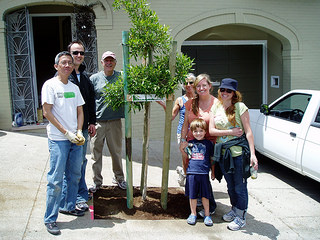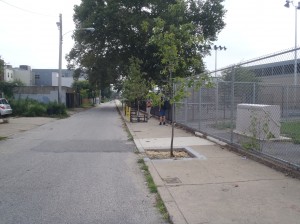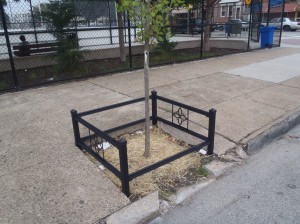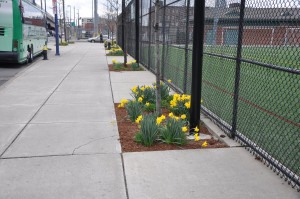Street trees have a lot in common with the city dwellers who tread beneath them. In exchange for a life of cultural stimulation and community interaction, they’ve chosen to occupy more–ahem!—modest spaces. (Think about your 500 square foot apartment versus a 5,000 sq ft house in the suburbs) Like urban denizens, real estate is at a premium for city trees, making their patch of land all the more sacred. That’s precisely why a city tree’s “patch of land” (aka the square of ground carved out from sidewalks for trees) has so many names. Here is what cities call their “patches of land:”
NEW YORK CITY
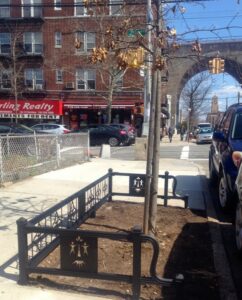
Here in New York City, “tree pit” was the term used for a tree’s home. However, as of late, the Department of Parks & Recreation changed the name to “tree beds”(as pictured left). “Ultimately we were interested in finding a term that was more closely tied to tree stewardship, and would encourage New Yorkers to care for trees throughout the City,” said NYC Parks Director of Street Tree Planting Matthew Stephens. “The thought of weeding, watering, planting, etc. in a tree bed versus a tree pit, has a distinct effect on how enjoyable tree stewardship can be perceived.”
WASHINGTON DC

What city’s image is more closely linked to trees than Washington DC?
Home of the storied cherry blossoms, DC refers to its tree bed as “tree boxes.” And while the most famous cherry blossoms dwell in the National Mall, others –like the tree pictured right—grace the streets of residential and business districts. To help people create the most sustainable “tree boxes,” Casey Trees, a DC-based organization, provides a super informative Tree Space Design handbook to highlight the best practice for street tree care in the DC area.
SAN FRANCISCO
The City of San Francisco uses the term “tree basin.” In the photo above, a few city residents of the Potrero Hill neighborhood proudly display their new tree, which they received and planted with the help of Friends of the Urban Forest (www.fuf.net). Friends of the Urban Forest provides an amazing array of programs for tree planting, care and community outreach. They even help with tree replacement for empty tree basins like this one below.
In addition, City of San Francisco provides this useful guide for sidewalks & basin care.
PHILADELPHIA
Philadelphia, which adheres to the tried-and-true term “tree pit,” has adapted some of the most innovative practices around. To help remove excess storm water from the street, Philadelphia Parks & Recreations joined forces with Philadelphia Water Department to create tree pits that are level with the ground.
Next, they installed tree guards to warn people that they are about to tread on a tree’s home.(Quite a lovely guard, if we do say so ourselves!)
BOSTON
Boston is another “tree pit” city. As you can see below, Beantown sports some lovely tree pits, particularly in the early spring. Surely, snow-bound Bostonians dream of the return of these gorgeous daffodils.
No matter what people call them, these patches of land unilaterally serve as beautiful city oases in which green things can take root, grow and spread fresh air and joy to the people below. Take note, a tree bed by any other name is truly just as sweet.
Contact us for:
